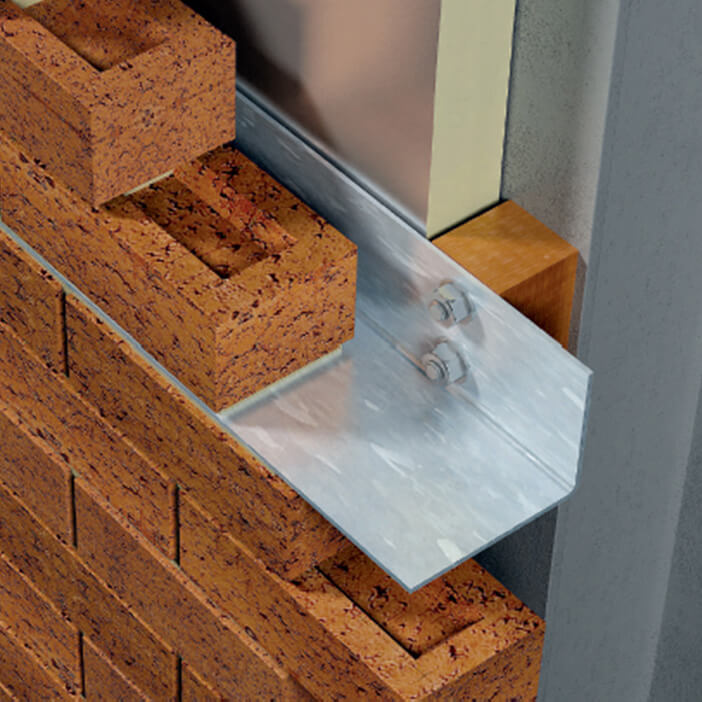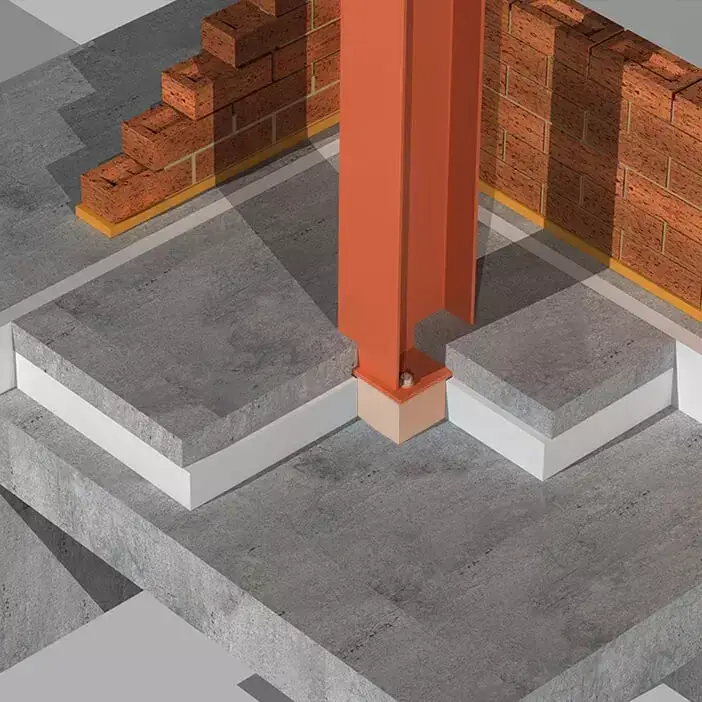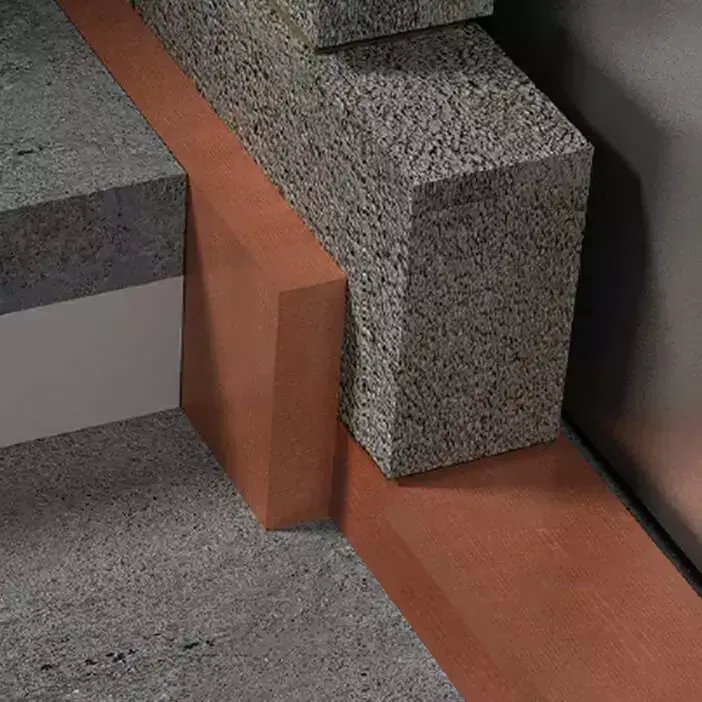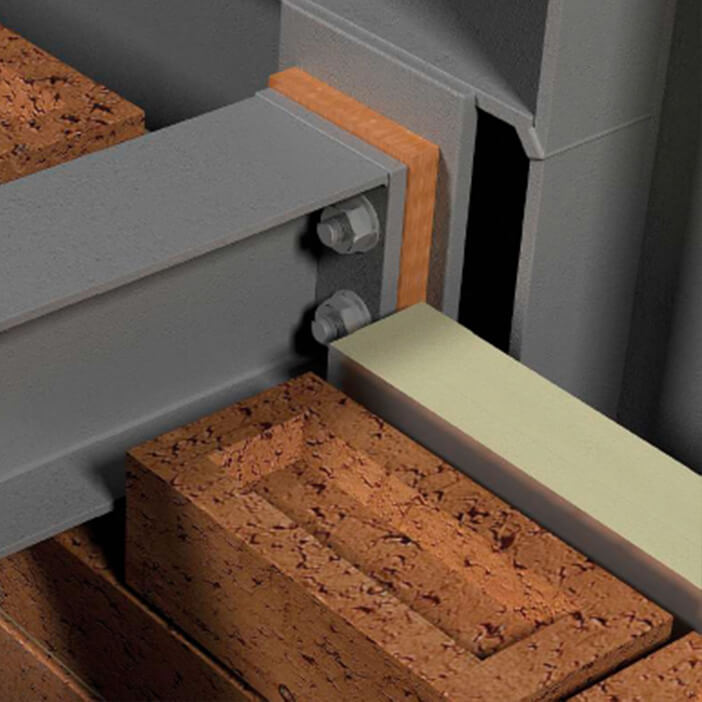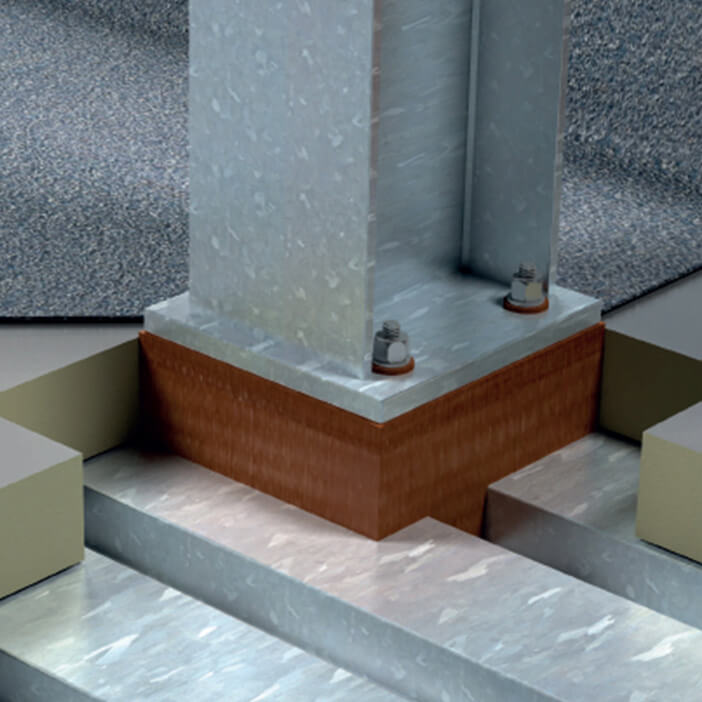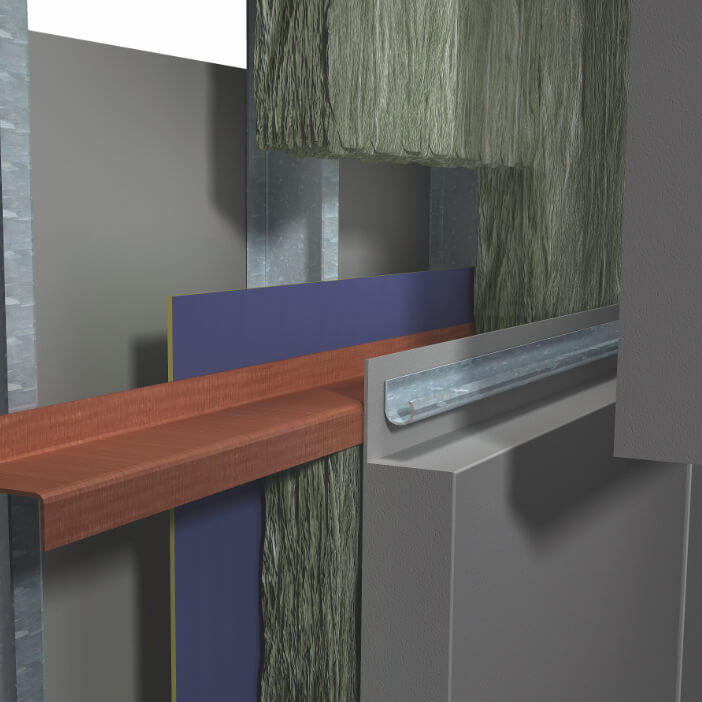Thermal Bridging Applications
When the goal is to design and build more energy efficient buildings, addressing thermal bridging must be a high priority. Thermal bridges bypass insulation which saps energy, and creates spaces that are not as comfortable, and healthy as they should be. Incorporating Armatherm thermal break strategies is cost effective, safe, durable, and effective answer to this challenge. Armatherm has the thermal break products and customer service you are looking for.
Armatherm™ — Masonry Shelf Angle Thermal Bridging Solution
Masonry veneer walls require tie-backs and shelf angles which form significant thermal bridges and can reduce a walls’ R value by as much as 50% making it difficult to meet energy codes.
Armatherm™ – Column Base Thermal Bridging Solution
Steel columns traditionally extend through the building envelope (floor slab) and insulation at their base.
Armatherm™ – Foundation Wall Thermal Bridging Solution
Foundations are part of a buildings’ thermal envelope. The intersection at a slab on grade to foundation wall and the exterior wall to foundation transition are both areas where heat flows out of a building due primarily to non-continuous insulation details.
Armatherm™ – Balcony Canopy Thermal Bridging Solution
The most common interface details for structural framing are canopies and balconies that use cantilevered steel or aluminum elements.
Armatherm™ – Parapet Roof Penetration Thermal Bridging Solution
The roof is part of the building envelope where penetrations such as davits, anchors and supports for dunnage extend through the thermal envelope and roof insulation creating non-continuous insulation.
Armatherm™ – Cladding Thermal Bridging Solution
Armatherm cladding attachments significantly improve wall assembly thermal performance. Armatherm FRR Z Girt, clip and thermal break shims provide a combination of low thermal conductivity and high compressive strength transferring load and reducing heat loss.
Need help?
Contact us today to find out more or request a quote.

 UK
UK USA
USA Canada
Canada Australia
Australia New Zealand
New Zealand Germany
Germany UAE
UAE Ireland
Ireland Sweden
Sweden Denmark
Denmark Norway
Norway